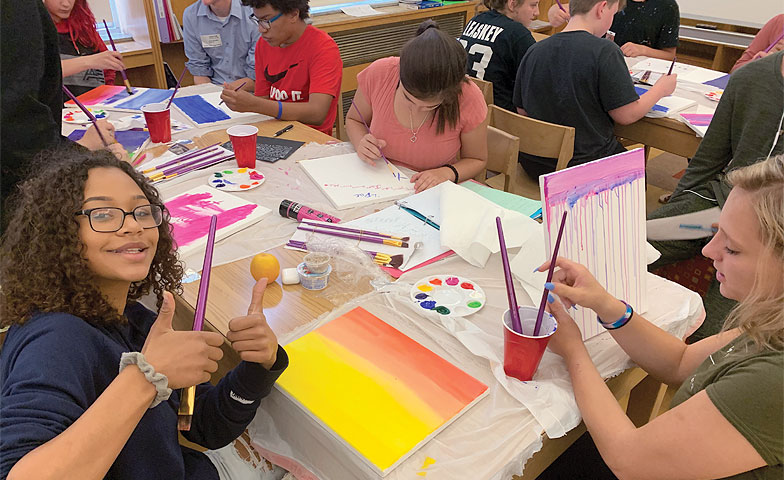Using art to boost student motivation and build community
Dopamine is known as the “feel good” neurotransmitter, and we crave it because it lets us know that predicted rewards are coming. That first sip of coffee that signals caffeine will improve your mood and energy level, the burst of euphoria when you win a race, and the ping of your phone can all cause a release of dopamine that screams “pay attention!” In a world filled with distractions and constant temptations it is difficult for teachers in a classroom to compete with all the things that are demanding a child’s attention. However, research shows that dopamine can also be a “motivation molecule” because it boosts our drive, determination, and concentration. The question then becomes how can we activate the motivation molecule for our students?
This year in my new role as the coordinator of alternative education and interventions, I’ve been given the freedom to try more innovative strategies and take risks to engage students who have not had good experiences with school. One area I knew I wanted to experiment with is integrating art into our daily routines and experiences. Additionally, I’ve found that creativity produces a “stickiness” for information, and that integrating art into the classroom is an amazing motivator.
Art can be used throughout a lesson or unit, but there’s something to be said for using it as an activator. For example, this year my English class is going to center around the topic of identity. Before we did our first writing piece, a narrative of one of their beliefs, I asked students to paint a background, let it dry, and then create a collage of what they hoped their life would be like in five years. They chose quotes, photos, and created a visual that acted as a resource for their writing, as they needed to identify how their belief system would support their goals.
Students did an excellent job, and it required the least cajoling I’ve had to do this year. Their paintings, combined with the socializing they had while painting, produced dopamine, and it signaled that something good was going to happen next. When students began their writing, they were primed for a good experience.
However, the greatest takeaway wasn’t the work they did, but the attitude they had about doing it. Students have requested opportunities to paint and create as a type of brainstorming. Just as they love to see the “Like” on social media or feel a spike in pleasure when they buy something they’ve been dying to have, painting impacts their social and emotional well-being as well by engaging them in something meaningful. Allowing students to create and work together has proven to be a powerful tool in building a safe space for the active sharing of ideas, and I highly recommend giving students this opportunity to enhance their learning. It activates the “motivation molecule” and helps learning stick, all while building community.



